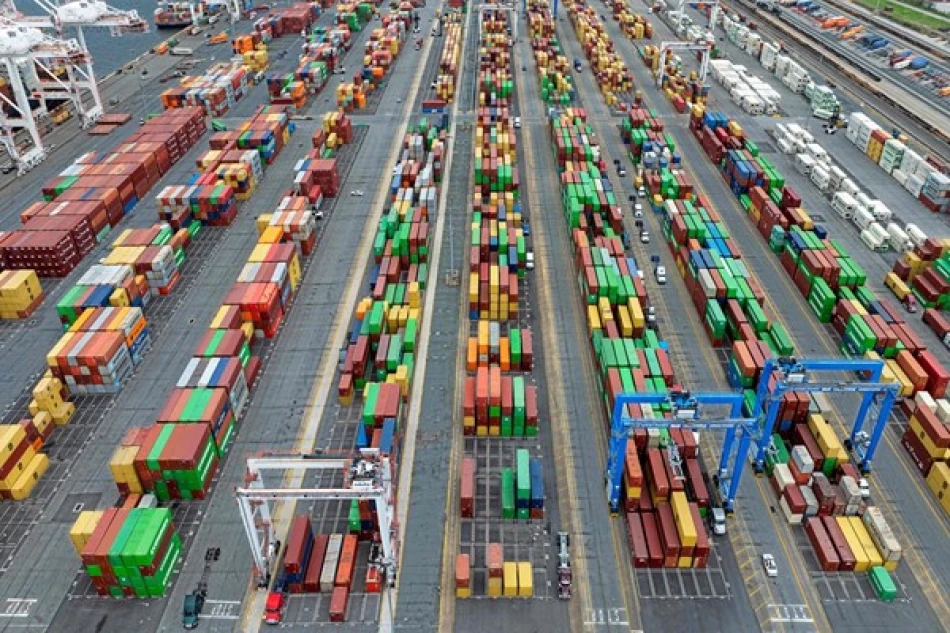
Trump's New Tariffs Implemented: Impact on Global Trade Dynamics
Trump's Global Tariff Offensive Begins: Europe Faces 15% Duties While China and Mexico Get Reprieve
President Donald Trump's sweeping new tariff regime took effect globally on Thursday, imposing duties on imports from the European Union and dozens of other nations in what marks the most aggressive trade policy shift since the 1930s. While the EU prepares for 15% tariffs on most of its exports to America, major trading partners China and Mexico remain under negotiation—a strategic move that signals Trump's prioritization of reshaping America's most complex trade relationships first.
Immediate Impact: 70 Countries Hit, But Not All at Once
The tariffs, which became effective at midnight Washington time (0400 GMT), target imports from approximately 70 countries, including all 27 EU member states. However, the rollout reveals a calculated approach: while smaller economies face immediate duties, Trump has kept his biggest trade weapons—potential tariffs on China and Mexico—in reserve as negotiating leverage.
The European Commission expects the 15% tariffs on most EU products to take full effect Friday, creating an immediate cost burden for European exporters from German automakers to French wine producers. This timing discrepancy suggests administrative complexity in implementing such a broad policy shift across multiple time zones and regulatory systems.
Europe's Defensive Strategy: Investment Promises and Acceptance
Facing economic reality, the EU has already signaled a accommodative stance, pledging major investments in the United States alongside acceptance of the 15% tariff structure. This represents a significant shift from the EU's traditionally defiant response to previous U.S. trade pressures under both Trump's first term and the Biden administration.
The investment commitments—still being negotiated for specific terms and timing—likely reflect European recognition that prolonged trade wars would damage their export-dependent economies more than America's larger domestic market. This mirrors similar capitulation patterns seen in the 1980s when Japan agreed to voluntary export restraints under U.S. pressure.
Strategic Omissions: China and Mexico Under Different Timelines
The decision to place China and Mexico on separate negotiating tracks reveals Trump's tactical approach to trade warfare. Both countries represent complex, intertwined economic relationships that require more nuanced handling than Europe's primarily finished-goods exports.
For China, ongoing negotiations likely center on technology transfer, intellectual property protections, and structural economic reforms—issues that go far beyond simple tariff rates. Mexico's separate timeline probably reflects USMCA trade agreement complications and immigration policy linkages that require coordinated diplomatic solutions.
The Russia Factor: Secondary Sanctions Through Trade
Trump's threat of additional tariffs on countries conducting business with Russia introduces a secondary sanctions element to trade policy, blending economic and geopolitical objectives. This approach could force allies to choose between Russian commercial relationships and U.S. market access—a powerful tool that leverages America's economic dominance for foreign policy goals.
Market Implications: Winners and Losers Emerge
For investors, this tariff structure creates clear beneficiaries and casualties. U.S. domestic producers in affected sectors should see reduced competition and potentially higher margins, while import-dependent American companies face rising input costs. European exporters will need to either absorb the 15% cost increase or pass it to American consumers, likely reducing their market share.
Currency markets may see continued dollar strength as tariffs reduce import demand while potentially making U.S. assets more attractive. European currencies could face pressure as export competitiveness declines.
Historical Context: Echoes of Smoot-Hawley
This tariff implementation represents the most comprehensive U.S. trade barrier system since the Smoot-Hawley Tariff Act of 1930, which contributed to global economic contraction during the Great Depression. However, today's stronger global economy and more diversified trade relationships may provide greater resilience against protectionist shocks.
The key difference lies in implementation strategy: rather than blanket protectionism, Trump appears to be using tariffs as negotiating tools to extract concessions, investments, and policy changes from trading partners—a more targeted approach that could yield different outcomes than 1930s-era trade wars.
 Layla Al Mansoori
Layla Al Mansoori







